-
How smartphones are fighting floods
A new smartphone app is helping the Army Corps of Engineers to strengthen its levees and fight floods in Kansas;filing reports is as simple as using a smartphone to take a picture, adding a note, and uploading the information to a database, which only takes a few seconds; this new system helps reduce the time it takes to gather critical information about levees by as much as thirty-six hours, giving engineers valuable additional time to detect and save a failing levee
-
-
Averting bridge disasters: new sensors could save hundreds of lives
One of every four U.S. highway bridges has known structural problems or exceeded its intended life-span. Most only get inspected once every one or two years; University of Maryland researcher has developed a new sensor that measures indicators of a bridge’s structural health, such as strain, vibration, flexibility, and development of metal cracks; the sensors are expected to last more than a decade, with each costing about $20
-
-
Tiny flying machines revolutionize surveillance work
Tiny aerial vehicles are being developed with innovative flapping wings based on those of real-life insects; incorporating micro-cameras, these revolutionary insect-size vehicles will be suitable for many different purposes ranging from helping in emergency situations considered too dangerous for people to enter, to covert military surveillance missions
-
-
Micro-robots emulate water-striding insects
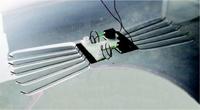
Researchers are working on building nimble micro-robots that are able to skim across the surface of water; the prototype devices emulate water-striding insects such as mosquitoes and water spiders, and could be used for military spy missions, water-pollution monitoring, and other applications
-
-
The world’s first "printed" aircraft flies
Engineers have designed and flown the world’s first “printed” aircraft, which could revolutionize the economics of aircraft design; the plane is a UAV whose entire structure has been printed, including wings, integral control surfaces, and access hatches; it was printed on an EOS EOSINT P730 nylon laser sintering machine, which fabricates plastic or metal objects, building up the item layer by layer
-
-
Auto theft going extinct?
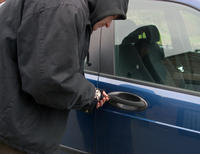
Thanks to aggressive police work and new technology car theft could eventually become an obsolete problem; new technological developments like high-tech keys, immobilizer systems, and GPS tracking have made it increasingly difficult for thieves to successfully steal cars; new police tactics and technologies like bait cars and license plate scanners have given law enforcement agencies the edge in tracking down stolen cars and catching thieves
-
-
Sensing "skin" protects concrete structures
Scientists have developed a sensing “skin” which is made of stretchy thermoplastic elastomer mixed with titanium dioxde; patches of the skin are painted with black carbon to measure changes in the electrical charge of the skin; the skin will be rolled out in patches across structures such as bridges and dams; the formation of a crack would cause a movement in the concrete under the patch, which would change the capacitance, or stored energy, of the skin; daily check by computers would detect the change the capacitance, and issue and alert
-
-
Texas A&M launches a blimp program
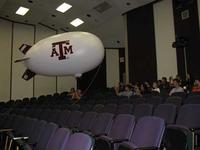
Texas A&M is launching a new airship program to develop lighter-than-air (LTA) blimps; LTA systems generate lift force by using sufficient volume of a lighter-than-air gas, such as helium; heavier-than-air (HTA) systems, on the other hand, generate lift by a relative motion between the wings or rotor blades and ambient air; airships can contribute to a number of missions including disaster response, homeland security, and communications relay
-
-
New fingermarks detection technology
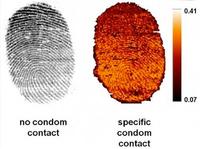
The new technology uses Matrix Assisted Laser Desorption Ionization Mass Spectrometry Imaging (MALDI-MSI) to provide crime scene investigators with key extra details about suspects; these details, such as any substances they might have touched, can provide crucial background information in a criminal investigation
-
-
Students develop landmine detection robot
A team of Texas A&M University at Qatar students and faculty has developed a state—of-the-art landmine detection robot as part of the NI Mine Detection Robot Design Contest; The competition challenged engineering students in the Middle East to work toward solutions to the real-life landmine problem that the Arab region and other areas face in the aftermath of conflict
-
-
Mathematical framework converts junk energy into useful power
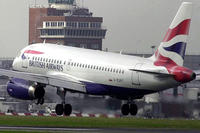
Researchers have developed a mathematical framework that could one day form the basis of technologies that turn road vibrations, airport runway noise, and other “junk”energy into useful power;
-
-
Cambridge U team intends to win the 2011 World Solar Challenge
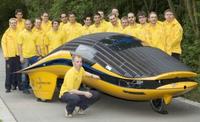
The World Solar Challenge, the “Formula One” of eco-friendly motorsport, consists of a 3,000 kilometer race across the Australian outback from Darwin to Adelaide; it will be held 16-23 October 2011; the University of Cambridge team believes it has a real chance to win with their newly designed Cambridge University Eco Racing (CUER) machine
-
-
Sensors printed on wetsuits detect explosives, other hazards
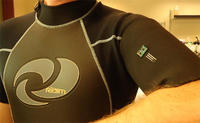
UC Sand Diego researcher has successfully printed thick-film electrochemical sensors directly on flexible wetsuit material, paving the way for nano devices to detect underwater explosives or ocean contamination; UCSD has a full U.S. patent pending on the technology, and has begun talks on licensing the system to a Fortune 500 company
-
-
World's first cardboard vacuum cleaner unveiled
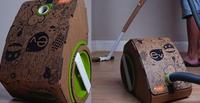
A U.K. vacuum cleaner manufacturer will market a high performance vacuum cleaner constructed out of recycled and recyclable materials; the device was designed by an industrial design student; the corrugated cardboard panels that form the body of the machine are easily replaced if damaged and cost just a tenth of the price of an equivalent plastic panel
-
-
New technology increase potency of beam weapons
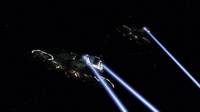
Laser scientists and engineers have long recognized that direct-diode lasers can offer significant advantages over other laser technologies due to their efficiency, reliability, compactness, and relatively low cost; applications for direct-diode lasers have been limited, however, owing to their low brightness — a combination of lower power and poorer beam quality relative to alternative laser technologies; a Massachusetts-based company, using wavelength beam combining (WBC) technology, is offering a way to solve this problem — allowing direct-diode lasers to be used in demanding industrial applications — and in effective beam weapons
-
More headlines
The long view
New Technology is Keeping the Skies Safe
DHS S&T Baggage, Cargo, and People Screening (BCP) Program develops state-of-the-art screening solutions to help secure airspace, communities, and borders
Factories First: Winning the Drone War Before It Starts
Wars are won by factories before they are won on the battlefield,Martin C. Feldmann writes, noting that the United States lacks the manufacturing depth for the coming drone age. Rectifying this situation “will take far more than procurement tweaks,” Feldmann writes. “It demands a national-level, wartime-scale industrial mobilization.”
How Artificial General Intelligence Could Affect the Rise and Fall of Nations
Visions for potential AGI futures: A new report from RAND aims to stimulate thinking among policymakers about possible impacts of the development of artificial general intelligence (AGI) on geopolitics and the world order.
Keeping the Lights on with Nuclear Waste: Radiochemistry Transforms Nuclear Waste into Strategic Materials
How UNLV radiochemistry is pioneering the future of energy in the Southwest by salvaging strategic materials from nuclear dumps –and making it safe.
Model Predicts Long-Term Effects of Nuclear Waste on Underground Disposal Systems
The simulations matched results from an underground lab experiment in Switzerland, suggesting modeling could be used to validate the safety of nuclear disposal sites.
